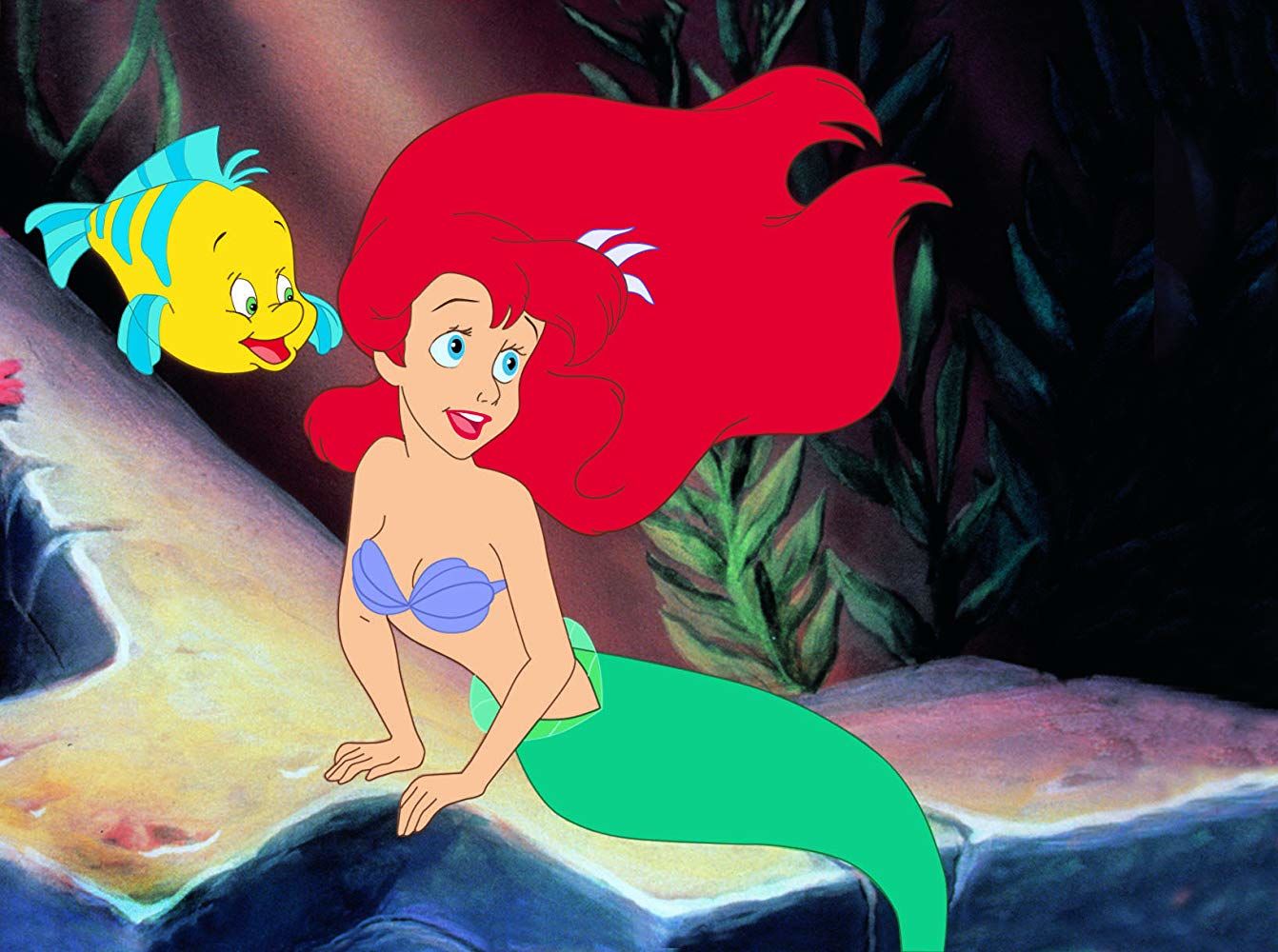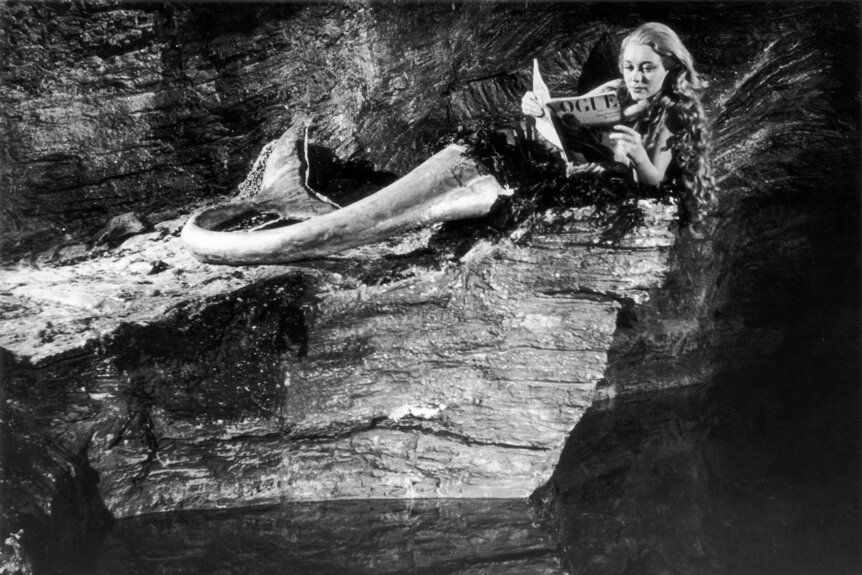Create a free profile to get unlimited access to exclusive videos, sweepstakes, and more!
Romance, horror, and fairy tale portrayals of mermaids in genre, from Disney to The Lighthouse

Mermaids have lured sailors, readers, and viewers for centuries with their half-fish, half-human form. The myth of this aquatic creature stretches back to the Assyria Empire (2500 BC-609 BC), existing long before Disney gave a happy ending makeover to the Hans Christian Andersen fairy tale. Representing the secrets, fantasy, and perils of the ocean, it isn't surprising that superstitious sailors of the past ascribed positive and negative meaning to a sighting of this mystical being. Much like black cat folklore (but with sexier results), mermaids are either harbingers of doom or represent good fortune.
Romance tends to factor into these stories, even if the mermaid tail is a bit of a logistical issue. However, obstacles are a vital part of rom-coms and romantic dramas.
Disney was inspired by Hans Christian Andersen's 1837 tragic romance, but instead of Ariel turning into sea foam at the end of the movie after failing to stab the prince, the animated classic opted for an on-brand Magic Kingdom happy ending. The studio will be returning to this particular story source as part of the live-action slate, trying to capitalize on this beloved underwater venture. While it doesn't have a release date as of yet, Halle Bailey will star as Ariel in a cast that also features Melissa McCarthy as Ursula and Jonah Hauer-King as Prince Eric.
In recent years, Sofia Coppola and Joe Wright have both attempted to adapt a version of this famous story, which would likely skew closer to the original tale. Neither has come to fruition, which is a shame because an ethereal The Virgin Suicides or Atonement take on this narrative — complete with the tragic dissolving-into-sea-foam ending — is long overdue. However, if you are looking for a movie featuring a mermaid that is more on the adult scale, The Lighthouse is for you!
Robert Eggers' film tackled the hooking up with a mermaid dilemma in a scene that answered a fish anatomy question in all its close-up glory. When Eggers spoke to SYFY WIRE last year, he discussed this explicit scene, "They give no access point to forlorn sailors or even to male mermaids who are looking to, you know, repopulate their species.” In a conversation with Thrillist, he noted the inspiration was female shark genitals, keeping it in the fish family.
Throughout The Lighthouse, superstitions are referenced by Thomas Wake (Willem Dafoe) as he scolds his young assistant: killing a bird is bad luck, as is not returning a drinking toast. When Ephraim Winslow (Robert Pattinson) finds the carving of a mermaid buried in his bed, he later finds out the man he replaced was driven to his death by madness, maybe because of the mermaid lure. Ephraim's dreams are haunted by the siren scream of the mythic creature. Masturbatory fantasies also feature this imagery, which begins to merge with his waking desires.
A mermaid sleeping with a man normally occurs after she has switched her tail for legs, but The Lighthouse is not your typical fairy tale or rom-com. Instead, it blends the horrors of 19th-century isolation with the stories told to curb the doldrums of being in a place like this. Unlike other mermaid hook-ups, this is not a literal fish-out-of-water story of a mermaid learning how to become a woman with the help of the guy she has fallen in love with.
Beginning in the 1940s, mermaids as a harbinger of maritime doom was less common. This deadly element had been replaced with something more wholesome with a strong undertone of sexuality and temptation. British comedy Miranda was adapted by Peter Blackmore from the play of the same name (that Blackmore also wrote) in 1948. Miranda Trewella (Glynis Johns) is a Cornish mermaid who is caught by Dr. Paul Martin (Griffith Jones) while he is on a solo fishing vacation, but she manages to ensnare him instead. In exchange for his freedom, the doctor agrees to take Miranda to London, disguising her tail with a blanket and pushing her around in a wheelchair.
Playing up to the seductive reputation, all of Paul's friends fall in love with the aquatic beauty. In Cornish folklore, mermaids are prominent, stories include having families with mortal men and causing powerful storms as revenge. At the end of Miranda, she is seen holding a merbaby, which raises far more questions about mermaid-human relations. Instead of causing the death of many men, the family folklore wins out in this post-war ear of filmmaking. And for a nod to fashion, Miranda reads Vogue in her cave — I wonder how she feels about mermaid tail gowns?
Also released in 1948, fantasy Mr. Peabody and the Mermaid follows a guy who accidentally catches a mermaid while out fishing on vacation. Arthur Peabody (William Powell) is recovering from influenza on the fictitious St Hilda resort in the Caribbean. Peabody's marriage is rocky, which explains why he is so taken with the mute mermaid (Ann Blyth) he accidentally ensnared. Calling her Lenore (because he thinks it is a lovely name), he hides the aquatic beauty in the fish pond at the resort.
Teaching her how to kiss, Lenore is far more innocent than other mermaid depictions — including Miranda. Notably, these two mermaids represent the chaste and seductive categorization that women are often placed into. Even with a tail, the Madonna-whore complex is alive and well.
Skip forward to 1966, Doris Day also wears the mermaid costume in The Glass Bottom Boat, which sees her getting caught by a fishhook. Unlike Miranda and Lenore, Day plays a human woman who is dressing up as a mermaid. Jennifer swims underneath her father's glass-bottom boat as part of the entertainment, but she ends up crossing paths (or fishing lines) with a new executive at her NASA day job. This movie is a spy comedy caper, but one that begins with a mermaid trope, and the notion of falling in love with this type of creature.
Combining elements featured in these earlier movies, Splash is the most iconic meet-cute between a human and a mermaid. The bathtub image of Daryl Hannah as Madison is seminal, but this particular location was also utilized in Miranda and Mr. Peabody and the Mermaid. Dating is hard, but dating when someone is out to prove your beloved is actually from the ocean is an obstacle most are not used to, and one Tom Hanks as Allen must overcome. There aren't plenty more fish in the sea when it comes to romancing a mermaid.
"I am never going to see a Merman," is how Steve Hadley (Bradley Whitford) sums up his disappointment in The Cabin in the Woods, but he could be speaking about movies, as mermen rarely get a look in. In The Shape of Water, there is a love affair and sex scene between a woman and a fish who resembles the masculine form. Meanwhile, The Creature from the Black Lagoon also features a man-sized aquatic dude, but neither is a merman. In The Cabin in the Woods, Hadley gets his wish but instead of the beautiful visage of a mermaid, the merman is a horrifying and deadly crawling creature.
Tracking the portrayal of mermaids through cinematic history portrays a similar pattern as to how female characters without a fishtail are often represented. Mermaids continue to entice, regardless of whether they are a nightmare laced vision suggesting madness has taken over or if the story resembles a childhood favorite. The Lighthouse was so enthralling in its depiction because Eggers produced a vision that was equal parts terrifying, alluring, and absurd rather than the standard of beauty that Hollywood leans into (mermen aside). A return to the Disney vision is coming, but this ocean is big enough for both interpretations and genre has more fishy tales to tell.

































